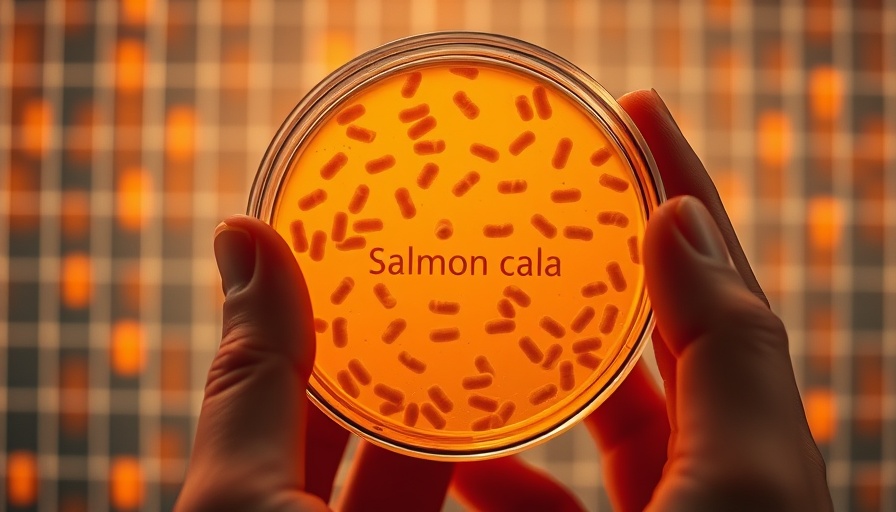
The Importance of Rare Disease Clinical Trials
Rare disease clinical trials are more than just a specialized area of research; they are vital for the advancement of medicine. While these trials face significant hurdles—ranging from limited patient populations to complex regulatory pathways—they hold the potential to unlock groundbreaking treatments that can dramatically improve the quality of life for patients worldwide.
Funding: A Critical Barrier and Innovative Solutions
One of the primary challenges in executing clinical trials for rare diseases is securing funding. These trials are often expensive, as they cater to small patient cohorts, which increases the cost per participant. Innovative financial incentives exist, such as tax rebates and grants offered by various governments. For instance, Australia's 43.5% R&D tax rebate and the U.S. Orphan Drug Act are instrumental in financially backing these trials, but navigating these benefits requires meticulous planning.
Sponsors that strategically leverage these funding opportunities can optimize cash flow, allowing for reinvestment in key areas like patient recruitment and advanced analytical technologies. Such foresight is essential in multinational trials, where funding sources may vary significantly, making financial efficiency a top priority.
Building Global Patient Databases for Greater Access
Another hurdle is patient recruitment. Fortunately, patient registries and advocacy networks are invaluable tools that connect researchers with potential trial participants. With global patient databases covering regions such as the U.S., Europe, and India, recruitment efforts can expand significantly. This is where decentralized clinical trials (DCTs) come into play, employing innovative models that improve accessibility for patients, thereby increasing participation rates.
AI-powered platforms that analyze clinical data, biomarkers, and genomic profiles are also proving effective in refining the recruitment process. This technology helps identify eligible patients across diverse populations, enhancing trial inclusivity.
Leveraging Global Expertise for Scalable Solutions
Due to their complexity, rare disease trials benefit from the collaboration of multidisciplinary teams across different regions. Countries with high populations and lower operational costs, such as India, provide access to genetically diverse patients while offering cost-efficient trial operations. Collaborating with local investigators not only enhances scalability but also upholds rigorous scientific and ethical standards, crucial for the success of any clinical trial.
Equally important is the regulatory expertise in navigating the intricacies of FDA and EMA pathways. Professionals versed in orphan drug designations and expedited review processes ensure that timelines remain on track, maximizing the potential for successful outcomes.
Overcoming Geographic Barriers with Decentralized Trials
One challenge that has historically impacted rare disease trials is the geographic dispersion of patients, making traditional participation cumbersome. However, decentralized clinical trials offer a modern solution that effectively reduces these barriers. By adopting telemedicine, home-based assessments, and mobile health technology, trials can reach more patients and maintain higher retention rates.
Countries with robust digital infrastructure, such as those in Southeast Asia, present excellent environments for implementing DCT models. This approach not only increases participation but also lowers operational costs, providing a streamlined pathway for executing rare disease trials.
Embracing Advanced Technology to Drive Efficiency
Advanced technologies are reshaping the landscape of clinical trials for rare diseases. AI-powered design tools can optimize trial protocols and forecast recruitment challenges beforehand, significantly enhancing trial efficiency. Furthermore, real-world data (RWD) and real-world evidence (RWE) can fulfill the gaps in traditional clinical datasets, creating a more comprehensive view of patient responses and efficacy.
Adaptive trial designs, which allow for modifications based on interim results, are also gaining traction in this field. This strategy enables researchers to adapt their approach mid-trial, potentially increasing success rates while minimizing unnecessary resource expenditure.
Navigating Regulatory Complexity for Better Outcomes
The regulatory landscape for rare diseases poses ongoing challenges, but it also opens doors to pioneering opportunities. Programs like the FDA's Orphan Drug Designation (ODD) and the Rare Pediatric Disease Priority Review Voucher are designed to incentivize research in underinvestigated areas. By understanding and leveraging these pathways, sponsors can significantly accelerate timelines for trial approvals.
Conclusion: The Path Forward
Addressing the challenges in rare disease clinical trials requires a multifaceted approach that includes innovative funding strategies, effective patient recruitment methods, global collaboration, and the integration of advanced technologies. By embracing these strategies, stakeholders can ensure broader access to clinical trials, expediting the development of treatments for those affected by rare diseases.
As we move forward, it is crucial for researchers, sponsors, and regulatory authorities to work collaboratively, transforming the landscape of rare disease trials into one that is more inclusive and effective. For more insights on how to navigate the complexities of clinical research, consider exploring resources available from iNGENū CRO and similar organizations.
 Add Row
Add Row  Add
Add 



Write A Comment